Facilities
Ritter Astrophysical Research Center
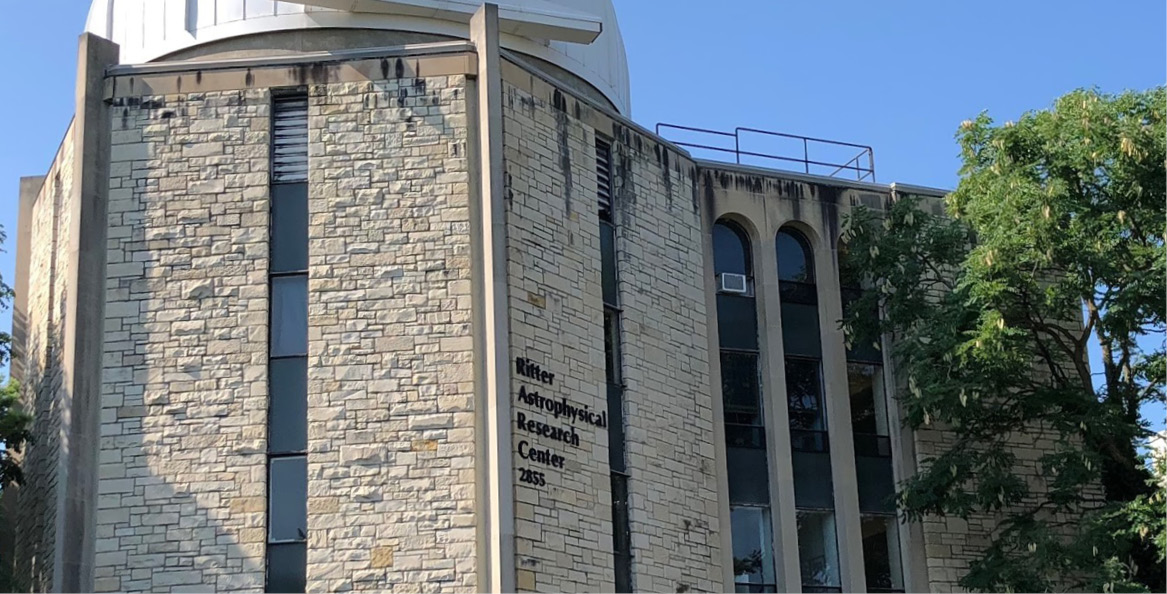
Nestled among the beautiful buildings of the University of Toledo's main campus sits the Ritter Astrophysical Research Center. It is home to the faculty, students, and staff of the astrophysics group at UToledo. Ritter houses a unique combination of educational and research capabilities. The ground level of the building houses the Ritter Planetarium, which is used to educate both UToledo students and the greater Toledo community about the wonders of the Universe. Atop the building sits the Ritter Observatory (see below), which houses a research-grade 40-inch telescope. The facility is used to study the hottest and brightest stars in the sky and train undergraduate and graduate students in the art of observing the night sky. In addition, it is open for public viewing on the first Friday of each month after the public planetarium program. In between the observatory and planetarium lie the offices and labs of the faculty, students, and staff of the astronomy and astrophysics group. The observatory is open to the public on the first Friday of each month after the planetarium program.
Lowell Discovery Telescope
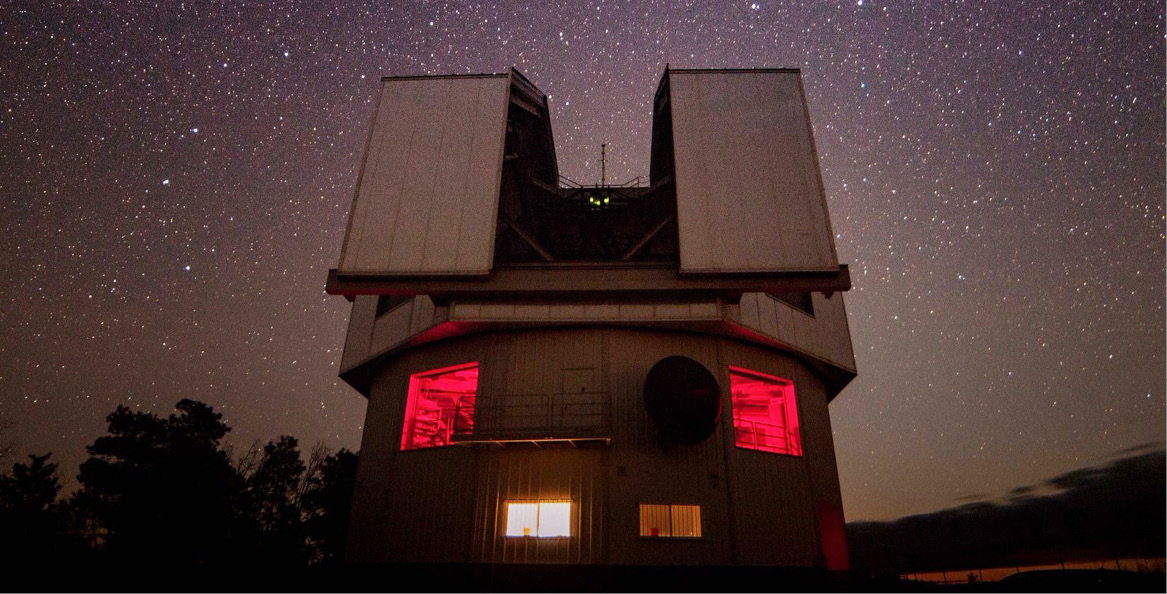
Perched high on the Mogollon Rim in Arizona's Coconino National Forest outside of Flagstaff, AZ, the 14-foot diameter (4.3-meter) Lowell Discovery Telescope (LDT) is the 5th largest optical telescope in the continental US. The LDT has a powerful and wide-ranging set of instruments at both optical and infrared wavelengths. The University of Toledo joined the LDT as a full partner in 2012, giving us dedicated access to the telescope and strengthening collaborations with our partner institutions: Lowell Observatory, Boston University, University of Maryland, Northern Arizona University, and Yale University.
Students, both undergraduate and graduate, postdocs, and faculty all make use of this facility, traveling on site, and operating LDT remotely in our new remote observing facility. We operate an internal time allocation committee to award 20 or more nights a year of LDT observing time, and strongly encourage student projects.
Watch a video about the University of Toledo's partnership with the Lowell Discovery Telescope.
Ritter Observatory/One-Meter Telescope
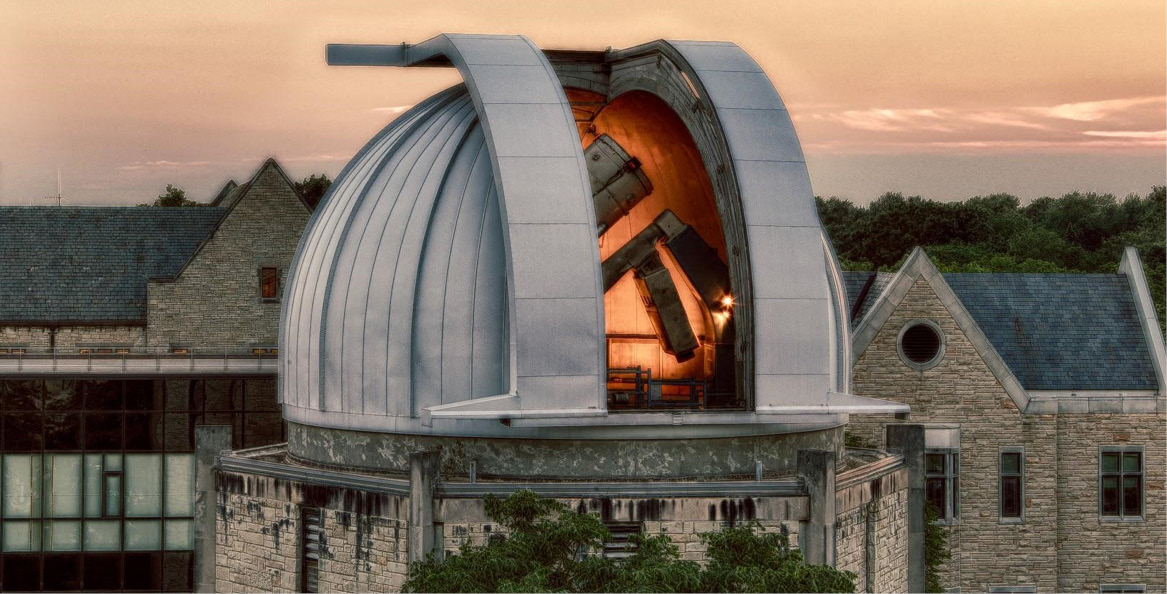
Ritter Observatory sits atop the Ritter Astrophysical Research Center building and consists of a 1.06-m, f/8 Ritchey-Chrétien reflector. It was the first telescope in the world whose mirror was made of "Cert-Vit", a glass-ceramics product that does not distort when exposed to extremes of temperature and which was developed by Toledo glass manufacturing company Owens-Illinois. It remains one of the largest telescopes East of the Mississippi River that is still actively used for astronomical research. The telescope is equipped with an optical imager and several optical spectrographs and is used to study the properties of hot stars and train graduate students in observing techniques. An observing team consisting of graduate students and undergraduates observes each clear night.
Ritter Planetarium
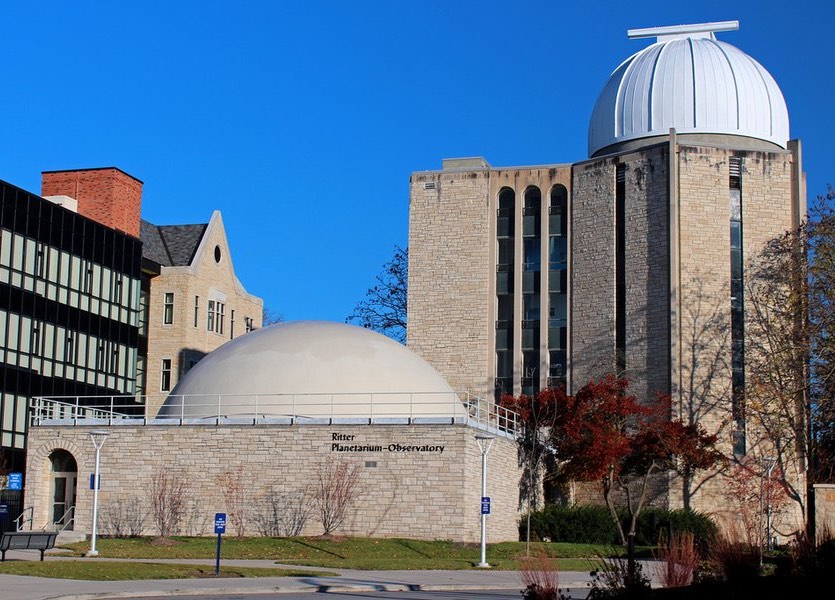
The Ritter Planetarium is Toledo's gateway to the Universe. Outfitted with a digital projector and full surround sound, the planetarium brings you the wonders of the Universe with live guided tours of the visible night sky and stunning full-dome imagery. As part of the University community for over fifty years, the Ritter Planetarium has been active in bringing astronomy to life for the student body, local school children and Scout groups, and the greater Toledo community. UToledo students studying a wide variety of disciplines including astronomy, Spanish, geology, and communication visit the planetarium each year to experience programs relevant to their field of study.
Brooks Observatory
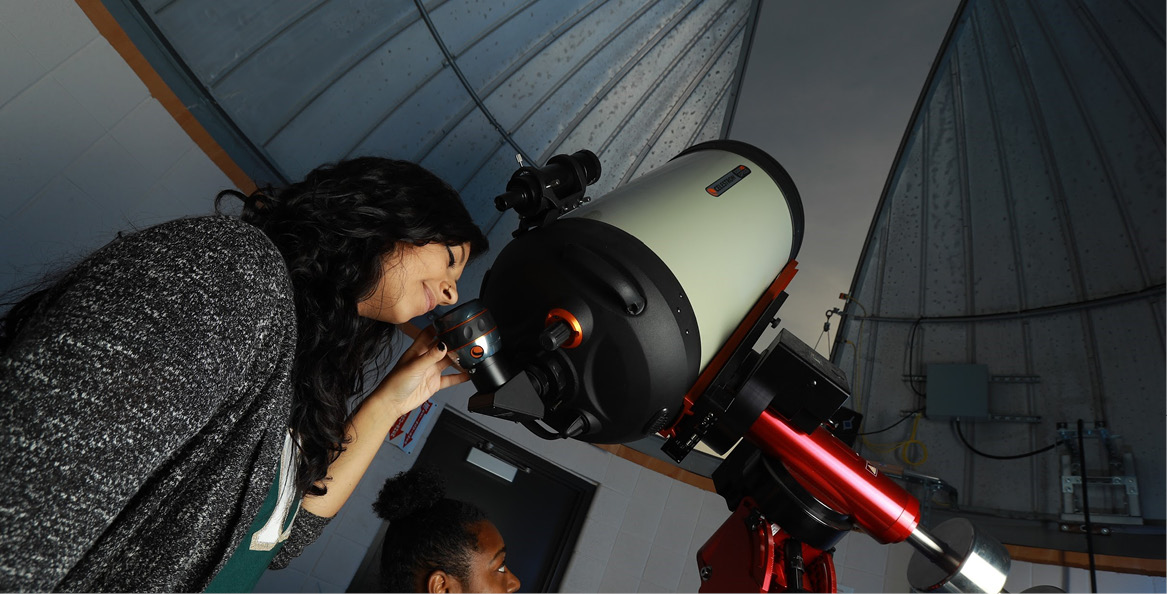
The Helen and Elgin Brooks Observatory sits atop McMaster Hall. It is used for public evening observing and by our undergraduate astronomy classes. It was named after Helen Brooks, who joined UToledo's faculty in 1953 as a professor of mathematics and was the first director of the Ritter Planetarium, and her husband, Elgin, who together donated money to equip the observatory. Its 16-foot dome originally housed a 6-inch Brashear refractor. In 2015, the observatory underwent major renovation and now houses a 14-inch Celestron EdgeHD telescope atop a Paramount MX+ German equatorial mount. The observatory is open to the public on the second, third and fourth Friday of each month after the planetarium program at Ritter Planetarium.


